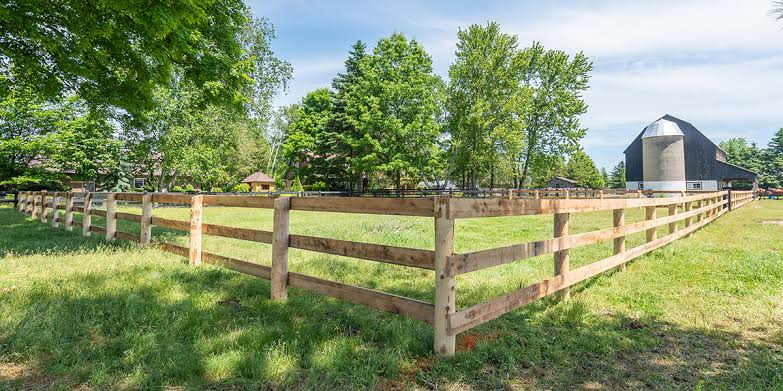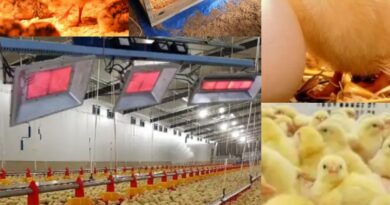Importance Of Farm Fencing
Farm fencing is an essential component of modern agriculture, providing a number of important benefits to farmers and their livestock. Whether you are looking to protect your land from wild animals, keep your livestock safe and contained, or simply enhance the appearance of your property, farm fencing is an effective solution.
One of the primary benefits of farm fencing is that it helps to protect your land and livestock from wild animals. Without proper fencing, your land may be vulnerable to damage from deer, coyotes, and other wild animals that can cause significant damage to crops and harm livestock.
Farm fencing acts as a barrier that keeps these animals out of your land, helping to protect your investment and ensure the safety of your livestock.
Another important benefit of farm fencing is that it allows you to contain and control your livestock. Whether you are raising cattle, sheep, or other animals, farm fencing is essential for keeping your animals safe and preventing them from wandering off your property.
This can be especially important in areas where there is a risk of predators, as fencing can help to protect your animals from danger. Additionally, fencing can be used to create designated grazing areas, which helps to ensure that your animals are getting the food and nutrition they need.
In addition to the functional benefits of farm fencing, it can also enhance the appearance of your property. A well-maintained fence can add aesthetic appeal to your land, improving its curb appeal and potentially increasing its value.
This is especially true for more decorative fencing options, such as wooden fences that can be custom-designed to suit your property.
Farm fencing is available in a wide variety of materials and designs, each with its own unique benefits. Some popular options include wood, wire, and plastic fencing.
Wooden fences are durable and can be customized to suit specific needs, but they require regular maintenance. Wire fences are less expensive and require less maintenance, but they are not as visually appealing.
Plastic fences are lightweight and easy to install, but they are not as durable as other options. The type of fencing used on a farm depends on the specific needs of the land and the livestock being raised.
Overall, farm fencing is an essential component of modern agriculture, providing a number of important benefits to farmers and their livestock.
Whether you are looking to protect your land from wild animals, keep your livestock safe and contained, or simply enhance the appearance of your property, farm fencing is an effective solution.
Read Also: Importance Of Green Farming
With so many options available, it is important to choose the right fencing for your specific needs, and work with a professional fencing contractor to ensure that your fence is installed correctly and will last for many years to come.
Types Of Farm Fencing
There are several types of farm fencing that are commonly used in agriculture, each with its own unique benefits and drawbacks. Some of the most popular options include:
- Wood fencing: Wooden fences are a popular choice for farms because they are durable and can be customized to suit specific needs. They can be painted or stained to match the aesthetic of the property, and they provide a natural look that blends well with the surrounding landscape. However, wooden fences require regular maintenance and can be prone to rotting and insect damage.
- Wire fencing: Wire fencing is a popular choice for farms because it is less expensive and requires less maintenance than wood fencing. It is also less visible, making it a good choice for areas where aesthetics are not a concern. However, wire fencing is not as visually appealing as wooden fences and can be easily damaged by weather and wild animals.
- Plastic fencing: Plastic fencing is a relatively new option for farms, and it is becoming increasingly popular due to its lightweight, easy-to-install nature. It is also highly durable, and it does not require any maintenance. However, plastic fencing is not as visually appealing as wooden fences and may not be suitable for all types of farms.
- Electric fencing: Electric fencing is used to contain livestock and it works by delivering a mild shock to animals that come in contact with it. It is a cost-effective and efficient way of fencing large areas. However, it requires regular maintenance to ensure that it is functioning properly.
- Barbed wire fencing: Barbed wire fencing is an affordable and effective way to keep livestock contained. It is mostly used on large farms, ranches, and in areas where there are few trees. The barbed wire is installed on wooden or metal posts and it can be easily damaged by wild animals and natural elements.
The type of fencing used on a farm depends on the specific needs of the land and the livestock being raised. It’s important to consult with a fencing contractor to choose the right fencing for your specific needs and budget.
Planning and Design
Proper planning and design are crucial when it comes to farm fencing. A well-designed fence should take into consideration the specific needs of the land and the livestock being raised, as well as any local zoning laws and regulations.
When planning for farm fencing, it’s important to consider the following factors:
- Purpose: What is the primary purpose of the fence? Is it to protect the land and livestock from wild animals, keep livestock contained, or simply enhance the appearance of the property?
- Livestock: What type of livestock will be contained by the fence? Cattle, horses, sheep, and goats all have different containment needs.
- Terrain: The terrain of the land will affect the type of fencing that can be used. A hilly or rocky area may require different fencing than a flat, open field.
- Climate: The climate of the area will also affect the type of fencing that can be used. For example, wood fencing may not be suitable for a humid, coastal area where there is a high risk of rot and insect damage.
- Budget: Farm fencing can be an expensive investment, so it is important to consider the cost when choosing a fencing option.
Once the purpose, livestock, terrain, climate and budget are considered, it’s important to consult with a fencing contractor to design a fence that will meet all of your needs.
A professional fencing contractor can help you choose the right fencing material, design and layout, and provide you with an estimate for the cost of the project.
It’s also important to take into account any local zoning laws and regulations that may impact the design and placement of the fence. For example, zoning laws may dictate how high a fence can be, or where it can be placed on the property. It’s important to check with your local authorities to ensure that your fence is in compliance with all laws and regulations.
In conclusion, proper planning and design are crucial when it comes to farm fencing.
It is important to consider the specific needs of the land and the livestock being raised, as well as any local zoning laws and regulations.
Consult with a professional fencing contractor to ensure that your fence is designed and installed correctly and will last for many years to come.
Installation and Maintenance
Proper installation and maintenance are essential for ensuring that your farm fencing lasts for many years to come.
After choosing the right fencing material and design, it’s important to work with a professional fencing contractor to ensure that the fence is installed correctly and meets all local laws and regulations.
Installation of farm fencing typically involves the following steps:
- Clearing the land: The first step in installing a fence is to clear the land of any debris or obstacles that may impede the installation process. This may include removing trees, rocks, or other obstacles that may be in the way.
- Setting posts: Posts provide the structural support for the fence and need to be set in concrete. The depth of the holes for the posts will depend on the type of fencing being used and the local soil conditions.
- Installing the fence: Once the posts are set, the fencing material can be attached to the posts. This will typically involve unrolling the fencing material and attaching it to the posts with nails or wire.
- Finishing touches: Once the fencing material is attached, any necessary finishing touches, such as gate installation, can be made to complete the installation.
Proper maintenance is also important to ensure that your farm fencing lasts for many years to come. This will typically involve regular inspections of the fence to check for any damage or wear and tear. Any damage should be repaired as soon as possible to prevent further deterioration.
Depending on the type of fencing used, maintenance may also include painting or staining wood fencing, tightening wire fencing, or replacing any broken plastic slats.
It’s also important to keep in mind that some types of fencing, such as electric fencing, require regular maintenance to ensure that they are functioning properly. This may include checking the fence for any broken wires or damage, and replacing any worn or damaged parts.
In conclusion, proper installation and maintenance are essential for ensuring that your farm fencing lasts for many years to come.
Work with a professional fencing contractor to ensure that the fence is installed correctly and meets all local laws and regulations, and then maintain regular inspections and repair any damage promptly. This will ensure that your farm fencing will provide reliable service for many years to come.
Read Also: Steps on How to Create and Manage a Household Budget



